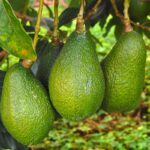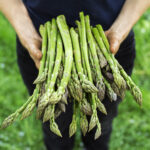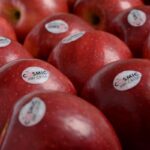Aussie banana industry buys time with "world's best practice" in TR4 containment

Grower meetings have been held in Northern Queensland this week to address the implications and biosecurity arrangements stemming from the positive detection of Panama Disease Tropical Race IV (TR4) on Australia's biggest banana farm. The mood has been of understandable concern according to the country's banana association chief, who outlines plans for containing the disease's spread and emphasizes the importance of allowing affected farmers to still trade fruit.
"This is a very serious soil-borne fungus disease, and internationally in Asia and Africa it has become more or less out of control, so they [growers] are very concerned and rightly so," says Australian Banana Growers Council (ABGC) chair Stephen Lowe.
But he believes the Australian approach to the problem has been "the best anyone’s done so far".
"I think the period of two years between the first and second detection has given us confidence in what we’ve been doing with our on-farm biosecurity in trying to contain the soil-borne pathogen to the sites where it’s been detected.
"I think there’s a real rally to continue that and make sure on-farm biosecurity is our best plan of attack.
"Certainly the approach is stop the spread of the disease, slow it down as much as you can, buy time for research. Research is still very important - we do want varieties that are at least tolerant if not resistant."
Like another debilitating fruit industry problem, citrus greening disease - which can have long incubation times before symptoms appear - it is very hard to know where TR4 is actually present.
"Until you get a banana plant that grows roots into this fungus spore in the soil you don’t get any symptoms and you really don’t know the disease is there. So that's one of the biggest issues we face," says Lowe.
"But science tells us that in its natural state this disease moves very slowly. The way it moves fast is via people or movement of plants or movement of soil.
"If we can reduce the risk of those mechanisms, especially with this particular farm which has had very good biosecurity in place for the last two years, we’re confident of containing it to this farm."
He adds other vectors that could spread the disease include feral pigs and wildlife, but they are not as big a risk as moving plant material or soil via human transmission.
"Certainly pig-proof fencing is the goal, and this particular farm has pig-proof fencing in place. Of course the trouble with wildlife is they don’t read your “Keep Out” signs, they don’t respect your boundaries, so there is still a risk.
"You’re never going to completely quell that risk but the idea is to minimize that risk as much as you can."
The option to stay operational
While the AUD$600 million (US$479 million) industry banded together to purchase the first property where TR4 was detected, Lowe says that decision was made as a one-off.
"That was clearly talked about before we bought the first farm that we wouldn’t buy more farms as further detections were found," he says.
But in the case of the recently infected Mackays Bananas property, the property is not for sale anyway.
"The growers involved have indicated they wish to continue trading on this farm, and they can do that under the TR4 Biosecurity Manual," Lowe says.
"There’s a very structured on-farm biosecurity manual that they have to comply with – part of that is they certainly can’t grow fruit in the area where the detections were found, and those particular areas will be fenced off and destroyed.
"But they can move product off the farm if they comply with the manual, things like making sure there’s no soil or tissue movement on or off the farm. And because they already had their own protocols in place for the last two years, they’ve been able to comply with the manual relatively quickly."
Could this approach serve as an inspiration for other growers in the area?
"Their operating costs will be higher than other farms that don’t have these biosecurity measures, so it does become a commercial decision whether they trade or not, but these are large commercial operators," Lowe responds.
"The other thing is we believe it’s very important to allow farmers the option to trade. You can imagine the situation if that wasn’t available, that we wouldn’t get any reporting of this disease as farmers wouldn’t be prepared to just lock up paddocks with millions of dollars’ worth of product in them.
"The other key reason trade is allowed is because the fungus does not transmit in the actual fruit, so the fruit will not carry the fungus," he says.
Diversification and the future of bananas
TR4 was not top of mind when many growers decided to mix up their geographical spread, but a strategy to protect farms from the elements may have been a godsend in the face of the fungal disease.
"There already has been diversification in the industry, not only crop-wise but geographically. For example some large farmers in the Tully Valley have taken up ground in the Lakeland district and are growing bananas there," Lowe says.
"This actually stemmed from the fact we had two cyclones wipe out a large proportion of the industry within five years of each other, and the diversification was geographic to make sure cyclones didn’t wipe out your whole business.
"But that's helped with the Panama situation."
On the issue of breeding tolerant or resistant banana varieties, Lowe says production is one thing and the market is another.
"There’s no guarantee that once you find a resistant variety that the consumer will eat it, but there’s no reason why we should give up. We’re certainly going to continue down that path," he says.
"Certainly at this stage there’ll be absolutely no effect on supply to the market. There are plenty of bananas on the market at this time.
"Long term, who knows? It depends on the spread of the disease, but we’re very happy with the response so far.
"And if that trend continues there’s really no reason why expansion of the industry can’t outstrip the effect of the disease.
Photo: www.shutterstock.com














































